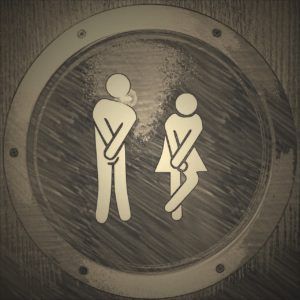Throughout the pregnancy, baby is supported by a hammock composed of the pelvic floor muscles, which also surround urethra, vagina and anus. Consequently, pregnancy imposed important pressure on these pelvic floor muscles, stretching them and leading to their weakening.
During the labour, baby delivery as well as episiotomy or tear will stretch or cut the perineum from the vaginal part to the anal part. In some case, the tear can rip apart the external anal sphincter.
Anal continence is a complex mechanism:
As we eat, food is digested by our stomach then by our intestine to reach the last part named rectum. Two sphincters close the rectum: an internal one with an involuntary control and an external one with a voluntary control (see our previous post for more details about pelvis & pelvic floor anatomy).
As the stools arrive in the rectum, it distends the wall which is supposed to trigger the need to go to the loo. When it is not possible to go, a voluntary contraction, of the external sphincter and of another pelvic floor muscle named pubo rectal muscle, diminishes the need.
After a while, the internal sphincter also contract but involuntary, allowing us not be forced to voluntary contract the external sphincter all the time without having to rush to the loo.

Types and mechanisms of anal incontinence:
When the external sphincter or other pelvic floor muscles are teared, the voluntary contraction is not possible anymore. Consequently, the time between the stools entering the rectum and having to exit is drastically shortened, we speak of anal incontinence.
Rectum works as a tank collecting stool allowing a delayed elimination. However, if the rectal compliance is reduced, this tank is smaller and can’t conserve the stools compiling to eliminate them more frequently. On the opposite, if the rectal compliance is increased or if the rectal sensibility is impaired, stools will accumulate leading to anal incontinence by overflow.
Rectum static dysfunctions are often the source of anal incontinence. For exteriorised prolapse (in very long labour or following use of forceps) anal incontinence is also frequent. For more details about prolapse mechanism and treatment, have a look at our post on the topic here.
Good bowel habits help to prevent some of these issues. However, they often necessitate women’s health physiotherapy treatment (pelvic floor rehabilitation).



